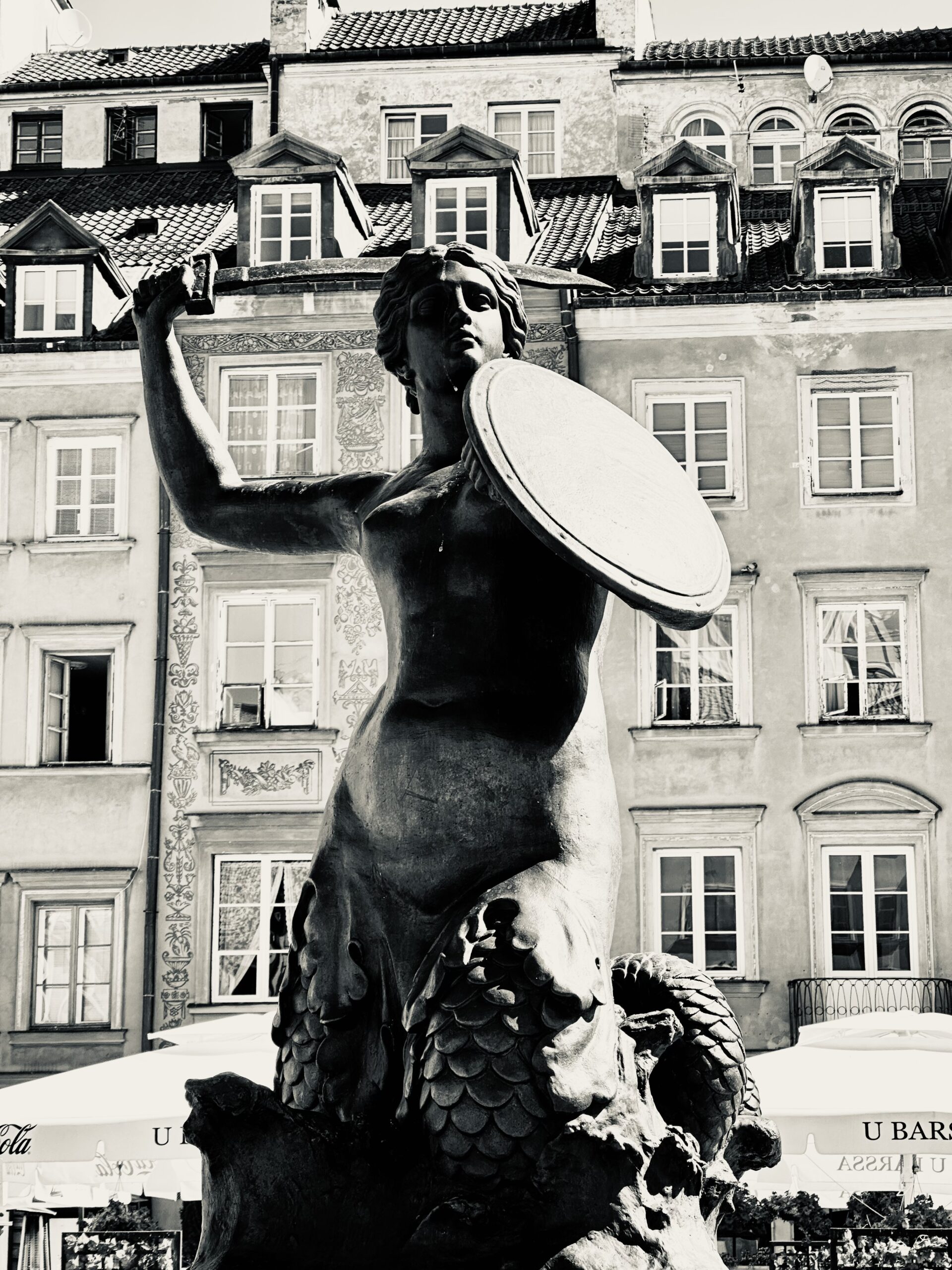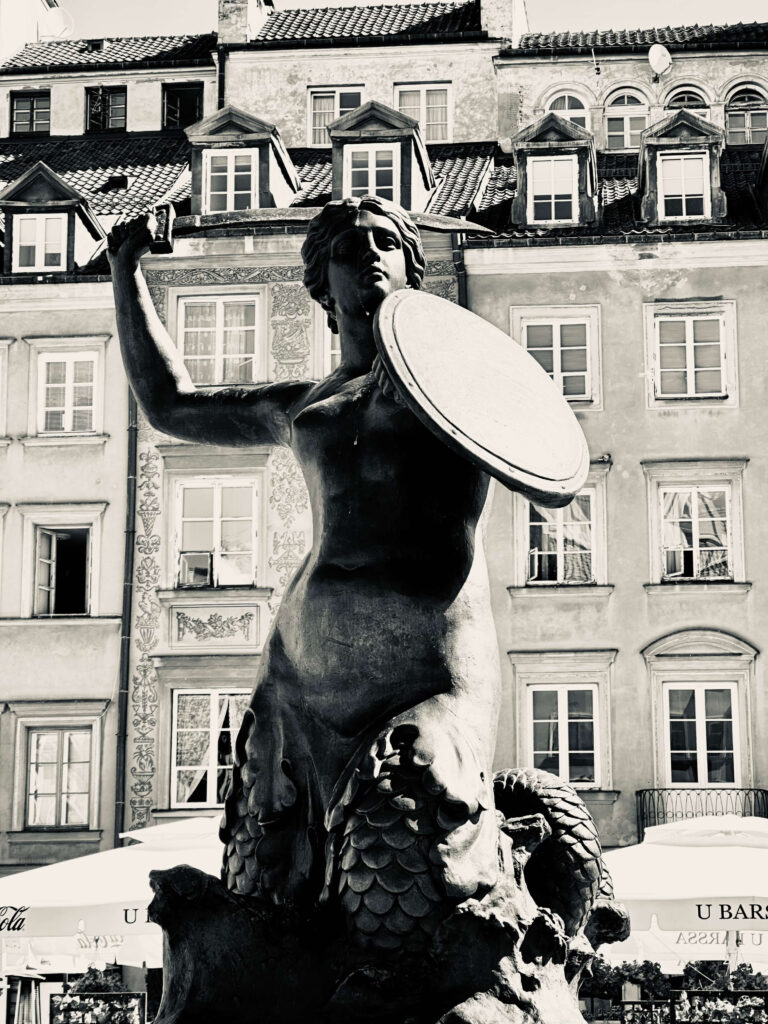
Our trip to Warsaw started with a bit of shoving the moment our plane landed. A woman roughly elbowed her way past my husband in the aisle, only to stand immediately and peacefully before him. After deplaning, I went to the first available lady’s room, a small two-staller, in the terminal. When I attempted to leave my stall, I was blocked by a six-foot woman. She was an immovable mountain. I could neither get around nor through her, and we settled for a staring match. I looked up at her, and she stared flatly down at me as if I were a bug she couldn’t bother to squash. However, if she wanted to pee she would have to let me pass. Begrudgingly she shifted her body a few inches aside so I could squeeze between the door and her shoulder, out of the stall to the sinks.
“I think this is just how Poland will be,” I said when I met up with my husband outside.
Throughout the trip, delivery men with boxes in shops or trolleys of goods would shoulder roughly past, one so hard that despite my leaning heavily into a chilled freezer of dairy products, he bruised my shoulder. I figured the people of Warsaw might just be extra shovey, like this was their cultural thing, and they wanted to make their physical presence felt like bullies do in elementary school. When we walked down an otherwise empty street, two repairmen leaning against a wall beside busted sidewalk muttered and stared darkly. One leaned out to do a theatrical dry spit in our general direction.
“Huh,” I thought. “Well, that sucks.” I don’t know if it is because my husband is Asian or I do not appear Polish with my dark hair and summer tan. Still, whatever it was, a tiny sampling of people throughout our quick weekend trip wanted to make sure we knew we weren’t welcome. I’ve read that xenophobia is an issue in Eastern Europe and looked up more on the experiences of others in Poland. There was a general buzz about people being shitty to foreigners who didn’t look Polish, so this is a thing to consider if thinking about a trip there.
The rest of our trip was met with a cool, courteous aloofness, which is fine by me. Even a bitchy checkout clerk where I purchased yogurt could not affect my day. She must have perfected resting fuck-off-and-die face from birth. I grew up around a similar sour, threatening-hillbilly-face in the Ozarks, so as long as I got my yogurt, I didn’t care if she disapproved of me.
The way I see it, I paid for my ticket and benefitted the economy, so I’ll just take my pigs’ knuckles and borscht and get on down the road, thank you.
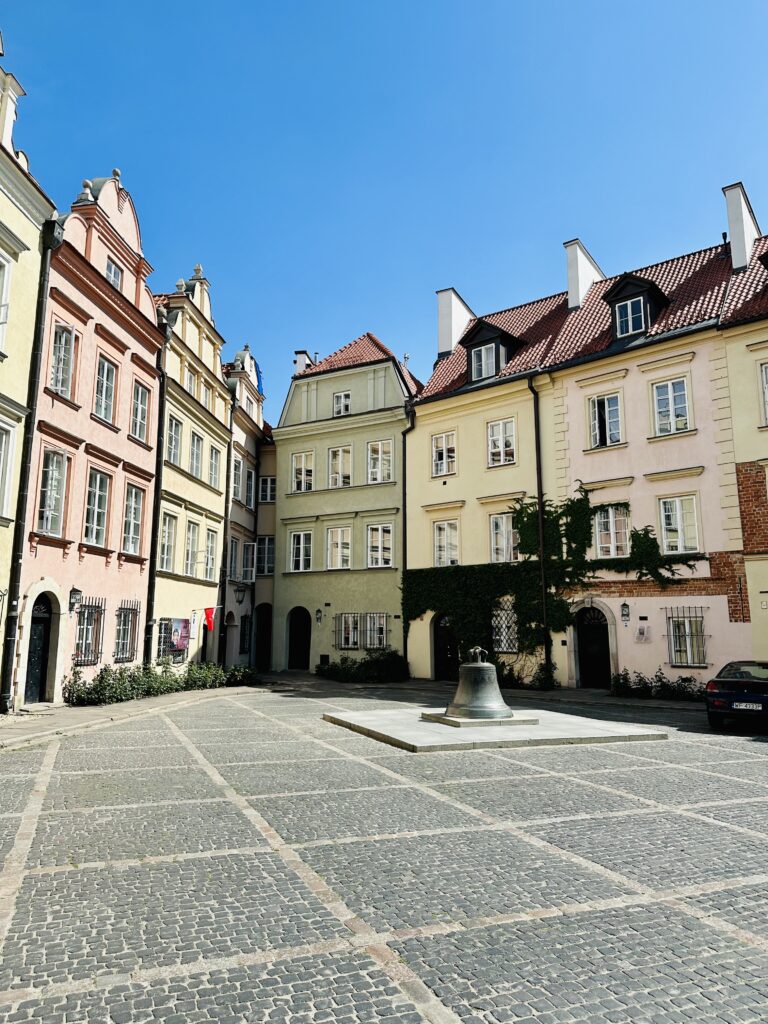
We went on a bicycle tour on our first full day. A humorless man directed us to pick out a bike by gesturing at them, but our guide Magda was very informative. We learned about the city’s history, riding through the area of the former ghetto where several hundred thousand Jews were herded into only a few small blocks, forcing multiple families to share single rooms and slowly starve until they were removed to death camps. Thousands of Polish people worked to assist their Jewish neighbors in those horrific times, and many were also complicit or active in helping the Nazis. It is a complicated history that some in the government wish to suppress. In 2018 the Polish government attempted to make it illegal to say anything about the country’s history that would suggest any complicity in the extermination of their Jewish neighbors. The consequences were up to three years in prison. The international outcry against the law saw parliament tone it down to a civil, finable offense without the threat of imprisonment.
Little remains of the ghetto. When the citizens heroically attempted to overthrow the Nazis in 1944, the Warsaw Uprising was met with the city’s total annihilation by Hitler’s orders. No opposition would be tolerated. 85% of the town was destroyed, and 200,000 people were killed. It is hard to imagine the complete devastation when looking at the bustling riverfront, modern buildings, and charming street cafes today.
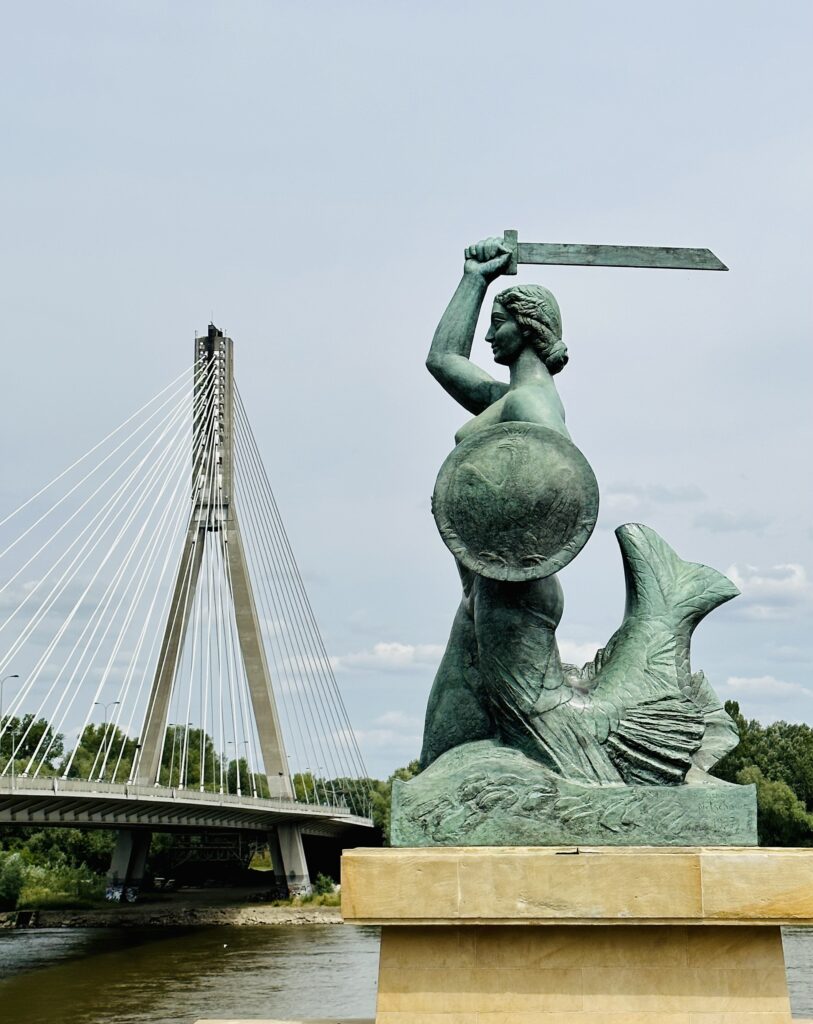
We cycled past statues of mermaids, one striking beauty beside the river displaying her shield and sword as the city’s protector. Despite being far from the sea, the legend is that a lost mermaid was caught in the river. Stories vary, but the fisherman argued over what to do with her and left her with one man to watch over her while they called others to witness their catch. She convinced him to free her with a promise that she would always protect the city. Unfortunately, she didn’t do such a great job if WWII is an example of her abilities.
Still, her fierceness is displayed throughout the city, from statues to refrigerator magnets for tourists.
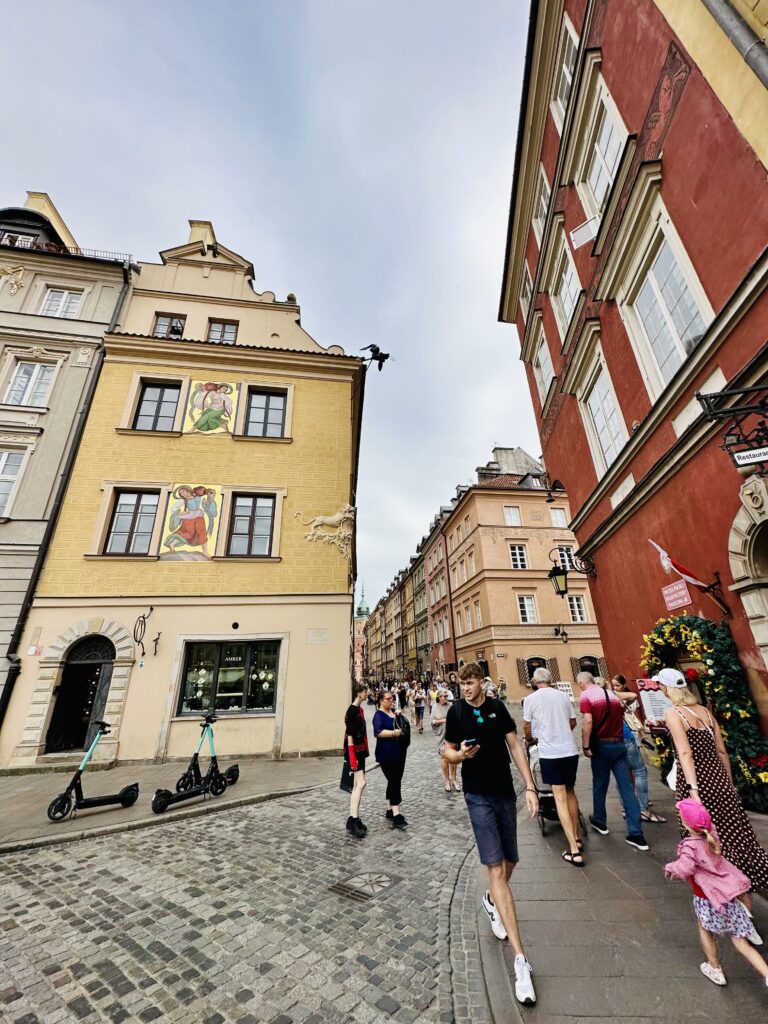
Cycling through the old town, we are reminded that it isn’t that old. Despite appearances, it was rebuilt entirely and identically after WWII when the city was leveled. Most of the structures date back to the early 1950s. The exception is the Royal Palace. One lone corner withstood the bombing and still displays chunks of missing stone where bullets struck. The palace took longer to rebuild and was not completed until 1984 via donations.
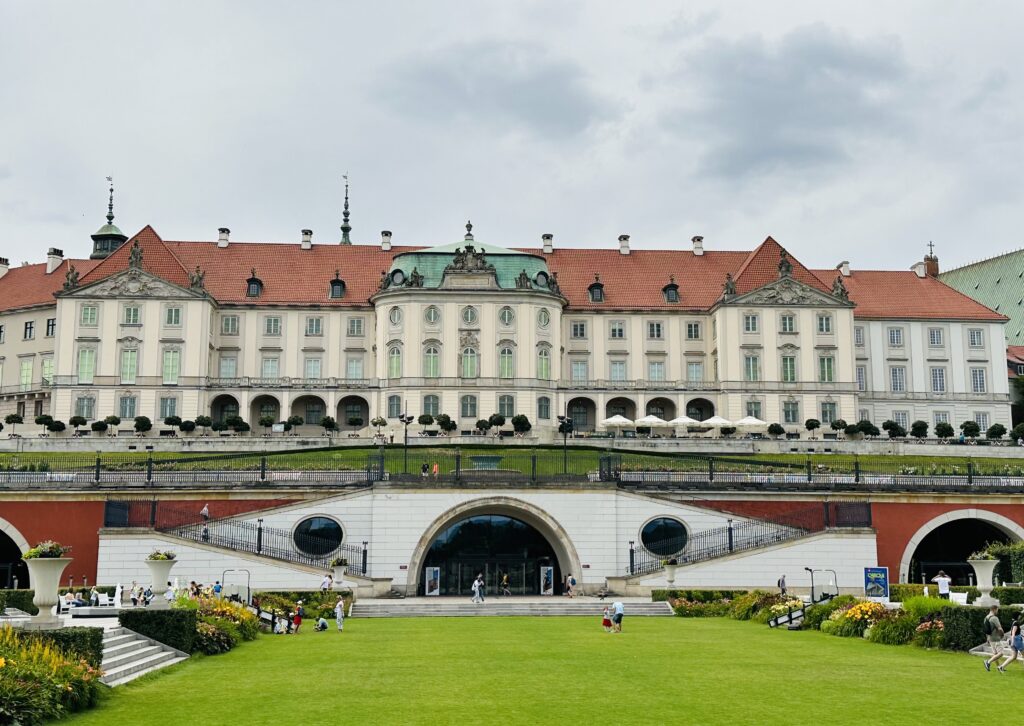
Warsaw has produced many great minds in science and music. Copernicus sits handsomely before the Staszic Palace, holding an armillary sphere. A reconstruction of what he might have looked like from his recently recovered (supposed) remains does not resemble the GQ-cover ready version in bronze.
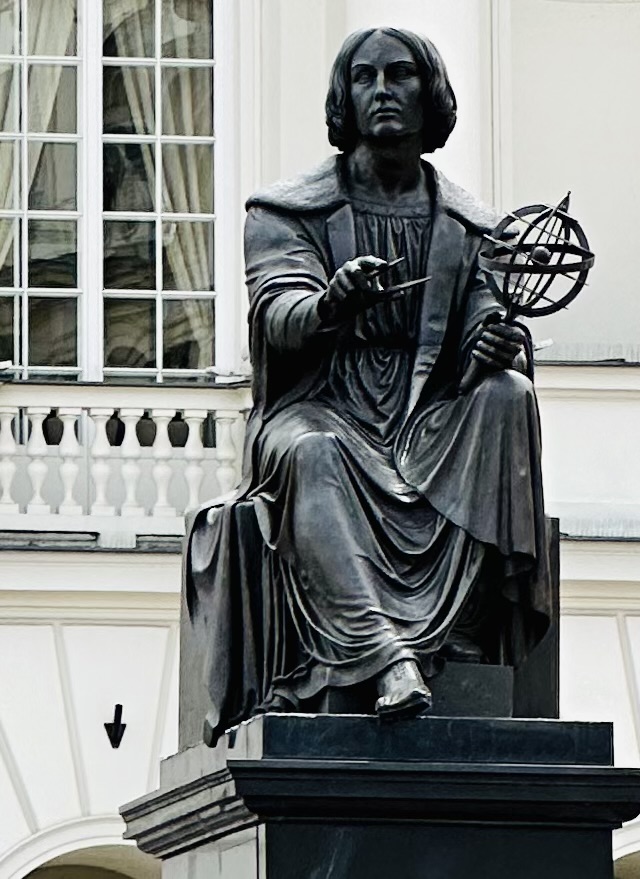

Madame Curie, the first woman to win the Nobel Prize, better known in Warsaw as Marie Salomea Sklodowska-Curie, was born and raised in Warsaw but left for more opportunities in Paris for her studies. There, her radioactive body was buried in a lead-lined casket.
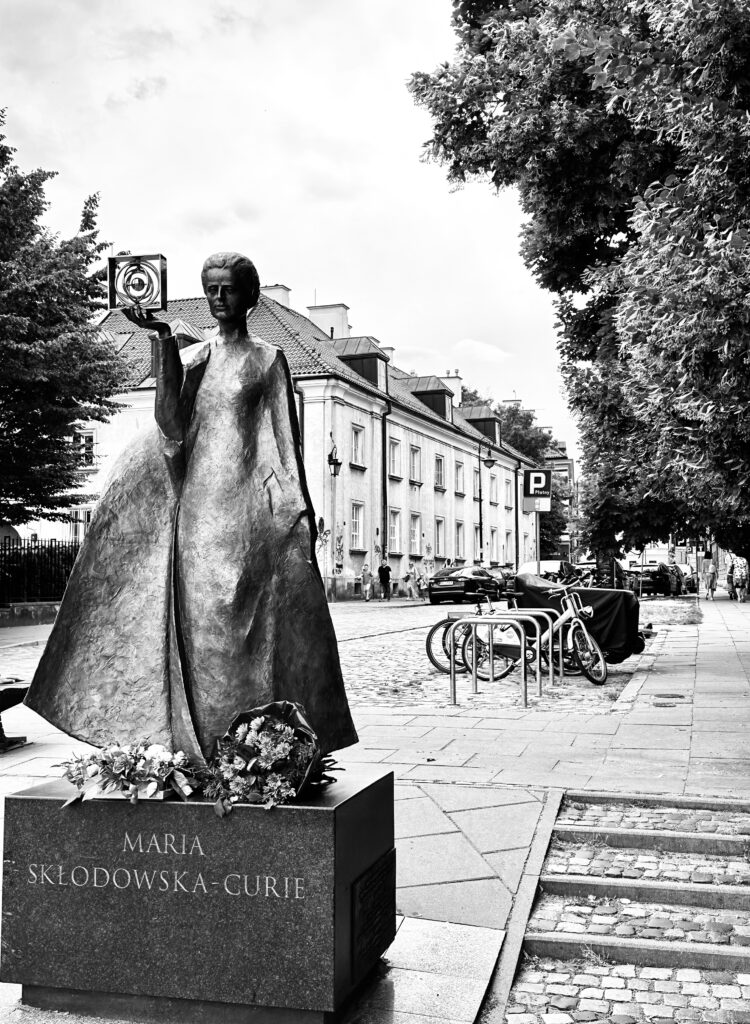
Born in the city but dying in Paris, the most celebrated citizen, Chopin, wished for his heart to be returned to his beloved Warsaw. His sister smuggled the pickled organ back in a jar of cognac. Every few years, a man’s job is to go around and check it with all the other human bits in jars and under glass at churches around the country. Sealed forever in the same glass jar containing cognac and air from 1849 Paris, the heart remains unchanged. We later attended a beautiful Chopin performance, watching the concert pianist deftly bang out some of his greatest hits. Witnessing his fingers flit over the keys was mesmerizing and transformative, the music lifting me to other places in my imagination. The man sitting beside me brought me back to Earth, though, punctuating the lulls with a whistling nose.
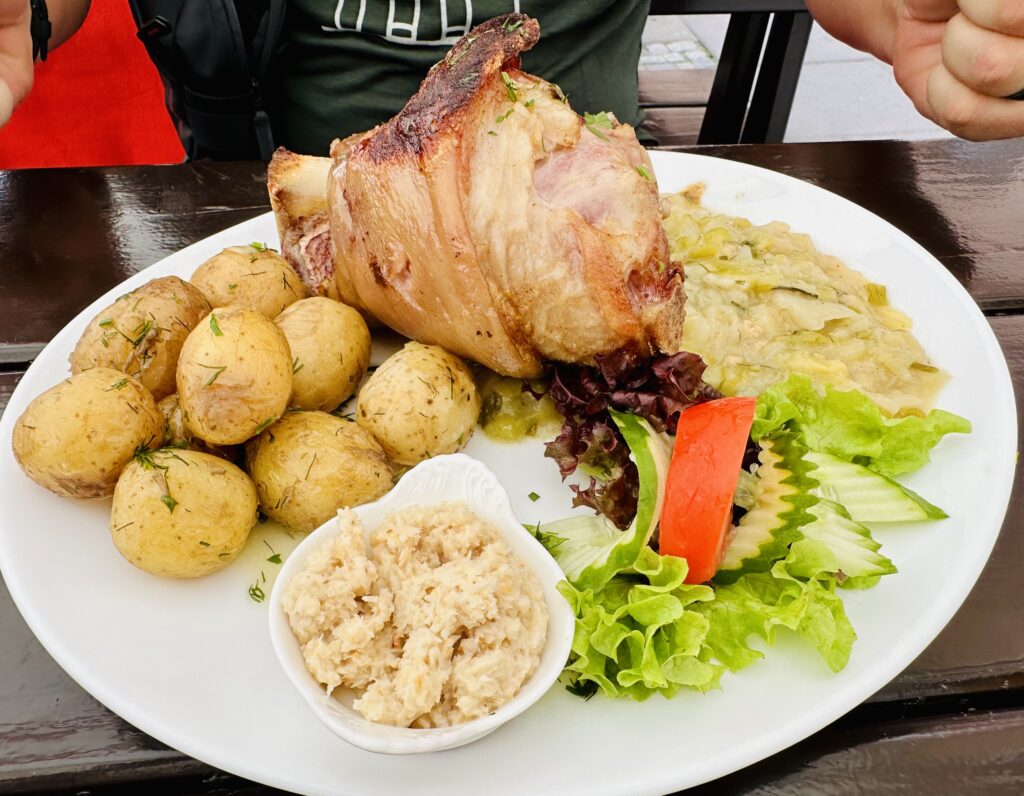
We returned our bicycles to the unsmiling attendant and stopped at a sidewalk café on our way back to our apartment for some pigs’ knuckles and veal. A cheerful woman brought us plates piled high with food and two large beers. We didn’t let a couple of shoves and sour faces ruin our first day in Warsaw, and neither should you if you intend to visit and experience this unusual, historic city.
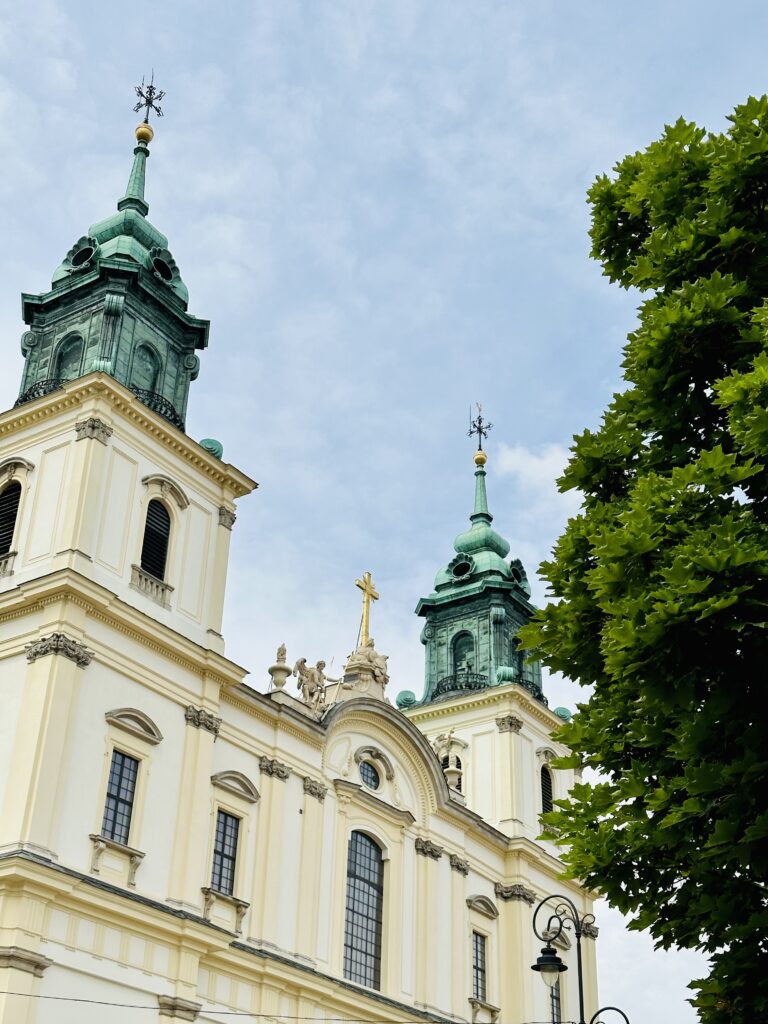
General Tips:
- The more you travel, the more often you encounter those who disapprove of your presence for their own reasons. A dry, theatrical spit in the air, a steely glare, even a shove, yet most people are still sufficiently friendly. If possible, don’t let the actions of a handful of jerks ruin your experience of a city. If not possible, quickly move on to a place more receptive to your presence and tourist dollars. No need to invest time or money where you aren’t wanted if you don’t have to.
- Try and learn a few words of Polish before you go. I attempted to learn them when I was there, but they were challenging to pronounce.
- Eat the pickled herring, the pigs’ knuckles, the potato pancakes, the borscht, the tartare, the pierogi, etc. Wash it all down with an excellent Polish vodka. Polish food is exceptional and unique—more on that in my next post.
